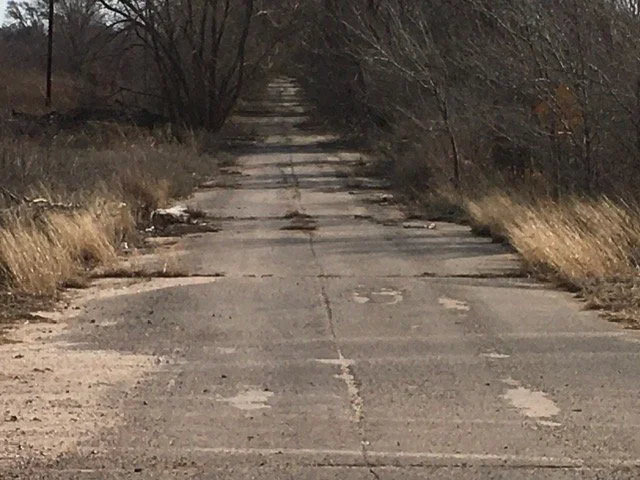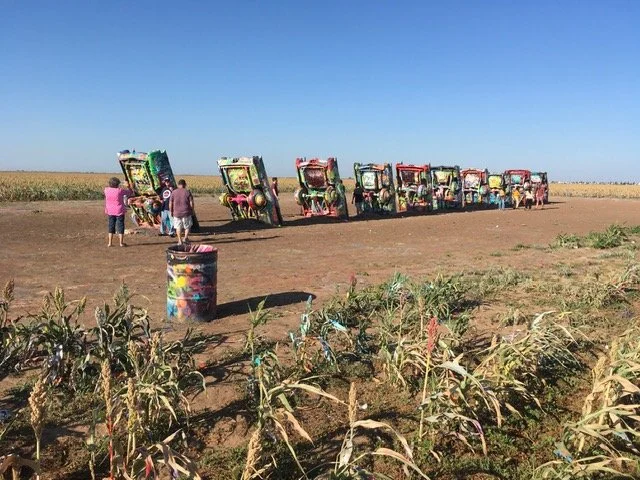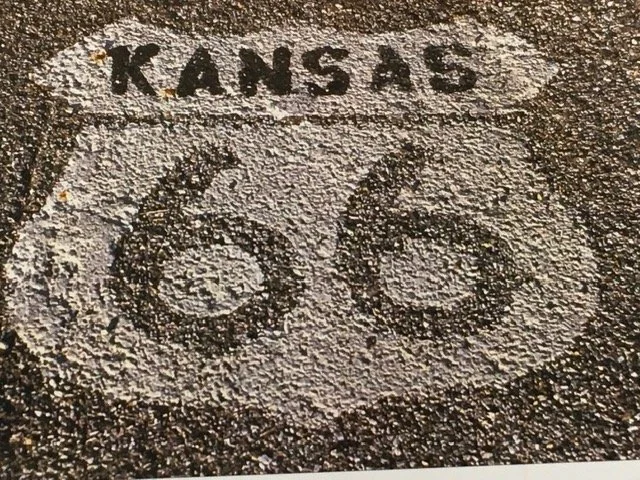EASTERN ROUTE 66
Arrive: Friday, May 31, 2024 in Amarillo, Texas
Depart: Sunday, June 16, 2024 From Niles, Illinois
16 Riding Days 1,200 MIles 32,000 ft Climbing
Explore the mother road
In 2024 Route 66 will celebrate its 98th anniversary since it was first designated as a National Highway in 1926. Since then, Route 66 has been immortalized in movies, books and songs as the classic American Road Trip. Images of roadside cafés and motels are portrayed on watercolor postcards as part of the 1950s family vacation when driving to the Grand Canyon or other exotic destination. Route 66 has spanned three generations of travelers, from the dust bowl migration to California in the 1930 through troop transports during WWII to the ever popular family vacation in the 1950s and 60s. But why was the path of Route 66 chosen in the first place?
In the early 1900s the road system in the United States was an assortment of trails and country roads with colorful names such as the Ozark Trail, Lincoln Highway and Old National Trails. Most of these routes were connected by unpaved farm roads. In 1926 the Highway Department adopted a numbering system for all national roads. Highways going across the country in the northern states were given low numbers (such as 2, 12, 20) and highways across the southern states were given high numbers (70, 80, 99). Route 66 received a medium range number because it crossed diagonally through the middle of the country. It was decided Route 66 would go between Chicago, Illinois and Los Angeles, California. It would include the cities of St. Louis, Oklahoma City, Amarillo, Albuquerque and Flagstaff, Arizona.
Towns and cities across America lobbied to be included on the major highway, just as towns tried to attract the railroad 50 years earlier. To be included on a major highway meant an instant stream of new business for their area. The path for Route 66 was designated by linking together a collection of lines on a map. Many of these roads were unpaved in 1926.
These rural roads were given funding for pavement and improvement. It took until 1932 before all of Route 66 had become a "hard surface road". Many routes were chosen to follow the easy grades of the railroad and avoided the straighter option of going over a mountain. During the next 20 years, Old Route 66 was straightened and improved with wider lanes to handle the increased traffic. The older routes were sometimes discontinued and were no longer attached to the new alignments. Some of the original towns were bypassed, just as the modern interstate would bypass a majority of towns in the 1970s.
When PAC Tour cycles Route 66 we will be looking to travel as much of the original route as possible. Many of these sections cannot be reached by auto or motorcycle, so a bicycle is the perfect way to travel these roads. Some of these roads were discontinued after World War II and have not seen any traffic or maintenance since. Our route will travel a combination of paved and gravel roads. A bicycle with 32 mm tires is required to handle the rough sections and still be fast on the many paved roads. A randonneur-style bike or hybrid is the perfect Route 66 bicycle. As we ride Route 66 we are always looking for the remains of a closed bridge or overgrown pavement which hasn't been used in 50 years. Basically, if you don't like exploring gravel roads...this is not a good tour for you.
Along the way, we will be stopping to check out the best milkshakes, apple pie, and hamburgers at the local cafés. Many evenings will include more Route 66 history lessons from local guest speakers and videos highlighting a section of the old road. Since we will be staying at many authentic smaller motels, this tour will be limited to about 12 motel rooms or about 18 people.
Registration will open on the PAC Tour website on October 1st. Details of prices and dates will be available after the motel contracts are ratified.
What’s included
Transportation of Gear (duffel bag up to 50 lbs, Computer bag - 17x12x4in & Stash Box - 16x8x8in)
Mechanical Support (Repairs, replacement components at cost, adjustments & advice)
SAG Support every 10-25 miles with water, snacks, cold soda, sunscreen, anti-chafe cream, & sports drinks (Gatorade, Heed, Sustained Energy)
1 meal paid for daily, either breakfast, lunch, or dinner at a historic diner or café.
Lodging at historic hotels wherever possible
Daily bike wash, lube, and cleaning supplies
Laminated, paper route cards, GPS Route Files & PDF Route Cards available
Custom Route 66 Voler Jersey (choice of cut, sleeve length, size, and option of vest & windbreaker)
Custom T-Shirt
Training tips & advice from champion ultra-marathon cyclists Lon Haldeman & Susan Notorangelo
Navigation assistance and tech support (loading & operating bike computers, off course corrections via phone)
Tour Fees
$3,800 double occupancy
Single supplement is additional = $1,000
Payment Schedule
Non-refundable deposit of $1,000 due at registration.
Final payment due February 15, 2024.
Rider count is taken 80 days before the start date of the tour and then final payments can be calculated and paid. PAC Tour will notify registered riders of the final costs for each tour.
You will receive water bottles and laminated route cards at the start. GPS files for the route will be emailed to you 30 days before the start.

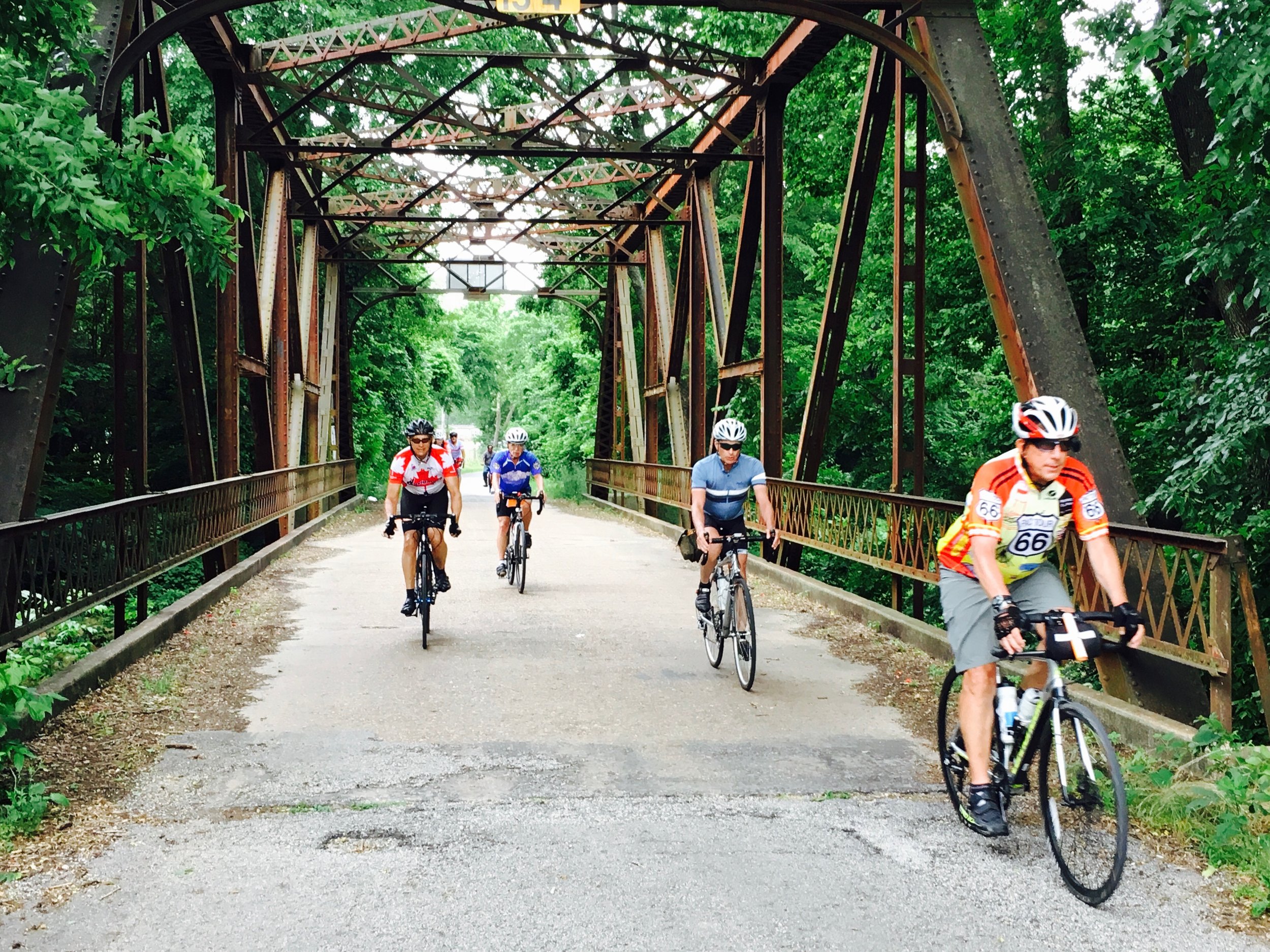





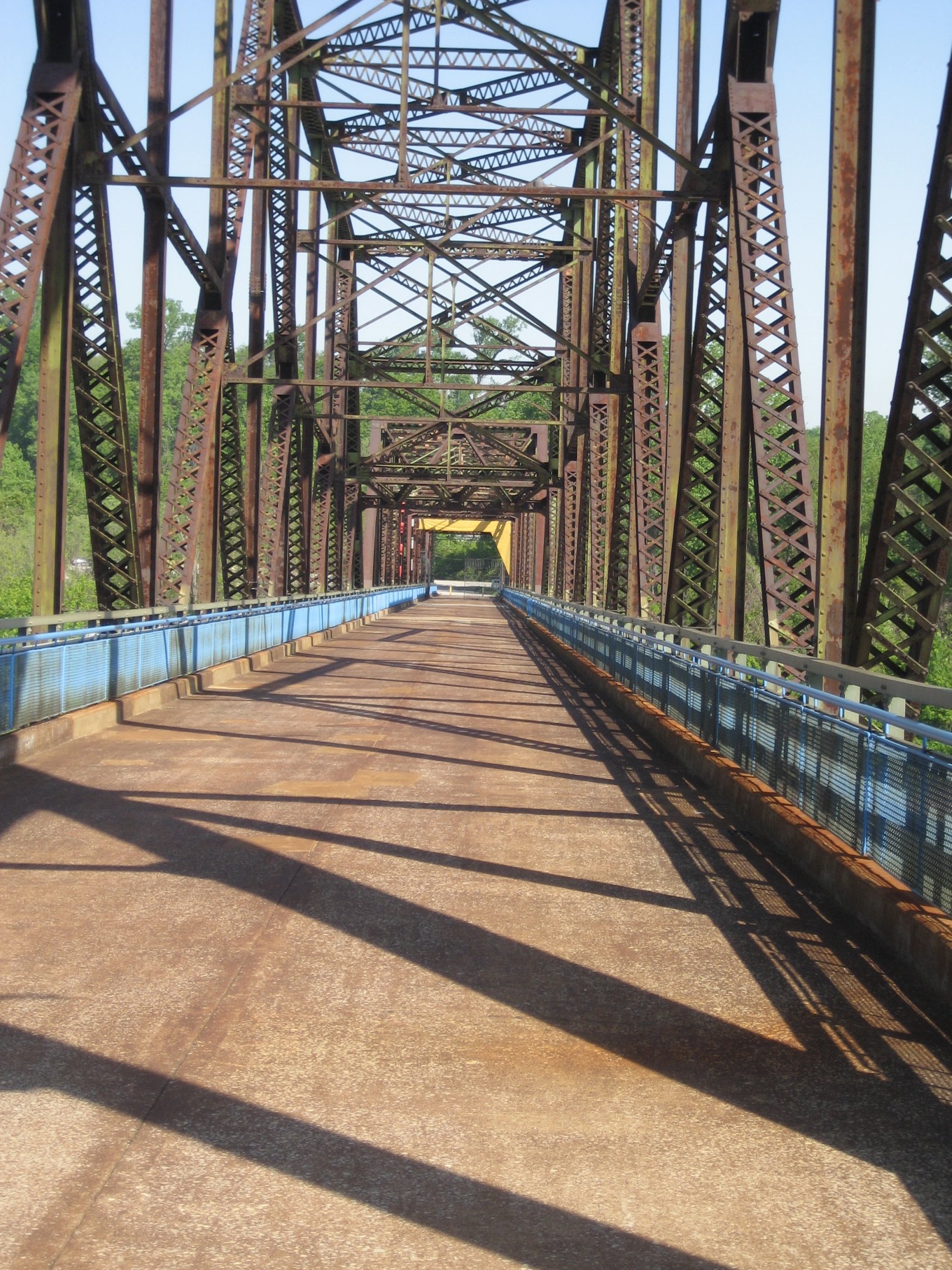

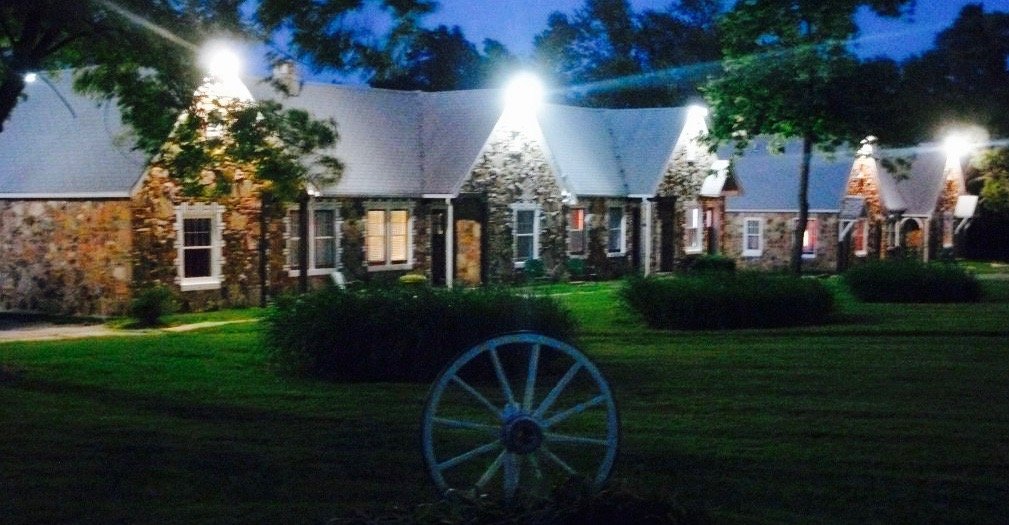
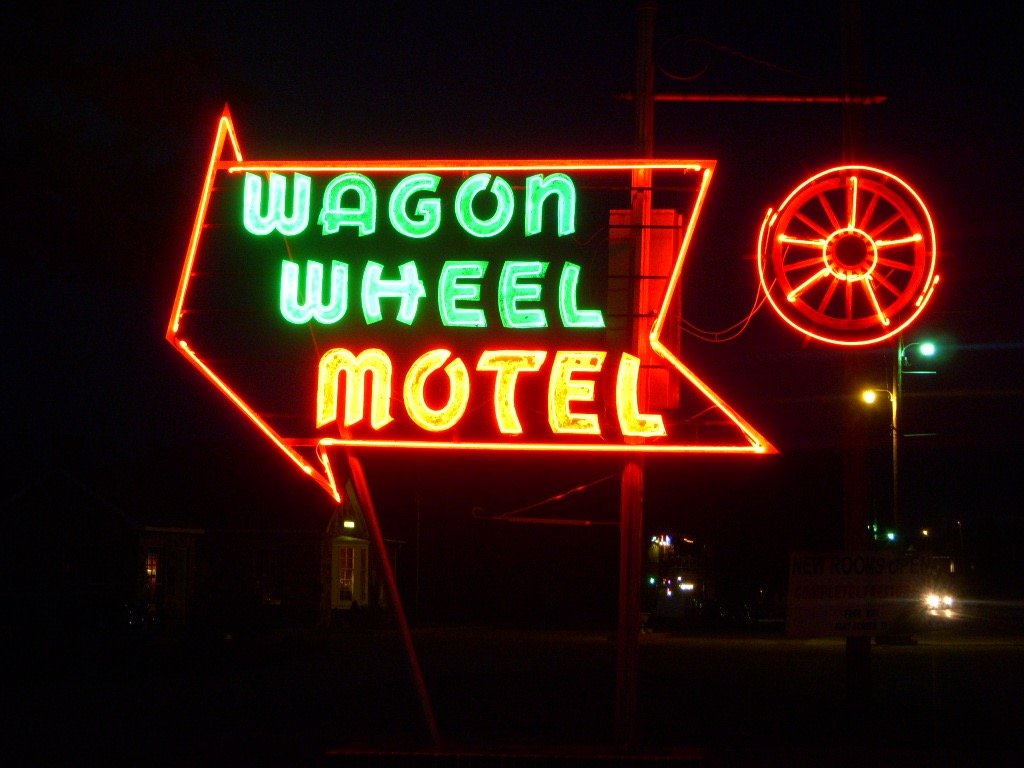
Food and Meals
During the tour, an average of one meal per day will be provided by PAC Tour. This meal will usually be at a famous diner or café along the route. Depending on the spread of the riders, this meal will usually be at a time when all the riders are eating together, so we can pay the group bill.
A mid-morning stop at our van will be a good time to stock up on more snacks or stow away extra clothing.
For lunch, a designated café will be listed on your route card. While you eat inside, our support van will be waiting to refill water bottles and provide pocket food for the afternoon.
Depending on the length of the day, an afternoon stop may be provided by our van. The gear bags will be delivered to the final motel at a specific time, usually after 3:00 PM.
Travel Plans to the Start and Finish
A detailed plan of starting in Amarillo, Texas and departing from Chicago, Illinois will be sent to you with the first updates. There are shuttle services and taxis to and from the airport available for each location.
Shipping Your Bike and Case
You can ship your bike to the starting motel in Amarillo. Remember, we will not be transporting hard shell cases during the tour. We will transport cardboard bike boxes that can be folded flat. We can carry C0-Motion type cases for take-apart bikes. If you have a full size hard shell case, you will need to arrange with UPS to transport your case to our final motel north of Chicago.
Motels and Smoking Rooms
We will stay in many smaller, quaint motels along the route. Most nights, our group will fill all the available rooms. We have tried to find motels that are clean but still represent the style of motel from 50 years ago. It is not practical for us to guarantee nonsmoking rooms for everyone each night. We will try to rotate our group so no one has a smoking rooms all the time. If you must have a nonsmoking room, this tour might not be the best adventure for you. We hope staying at older Rt. 66 motels is not a problem for you.
Jersey Design
We are designing a new Rt. 66 jersey. These jerseys are always collector items, even among non cyclists. You will receive one jersey with your registration. You can order an additional jersey, wind vest or jacket at an cost of $TBD per garment. Our deadline for ordering additional garments is 90 days before the tour. Contact Lon Haldeman if you want an additional Voler item, and you can pay for it with your final payment. haldeman@pactour.com
Where is the "Best Milkshake on Rt. 66"?
During the tour we will have lots of opportunities to eat at many interesting diners. One of the fun things to do is sample the "Best Of Rt. 66". We would like to keep track of the best hamburger, milk shakes, french fries, pie, waitress or any other thing we want to compare. We are going to rank all these items and keep track of them during the tour. If you can think of anything you want to add to this list be sure to let everyone else know so we can compare ideas during the tour.
Scavenger Hunt on Rt. 66
On the tour we will have a scavenger hunt to find specific items. Some items you can find along the roadside or you might have to look in a flea market or antique store. Finding for these items is a good time to talk with the local people. Some things we will be looking for are; the oldest vehicle license plate, the oldest soda or beer can, the unique salt and pepper shakers, the most outrageous hat and many other items. Anything you collect will be a good souvenir of your trip on Route 66.
PAC Tour Gear bags
You will receive your PAC Tour gear bag in mid-April. This gear bag is about 5,000 cubic inches, or the size of three brown paper grocery bags. All your clothes should easily fit in this bag. You will receive information about packing your gear bag. Remember, if you bring it...you lift it. We will have some space in our trailer for your souvenirs, so you don't have to carry every souvenir in your gear bag you buy. Extra purchases will be kept in deep storage, so we will keep them safe, and we will not have to move them every day.
If you already have a standard PAC Tour gear bag you can receive a $65 credit on your final payment. Be sure to contact Susan at notorangelo@pactour.com if you do not need a new gear bag for Rt. 66.
The Best Bikes and Tires for Route 66
This is our 13th Tour on Route 66, including our transcontinental tours on the old road. We are planning to ride on the sections of Route 66 that avoid the interstate (Interstate mileage is 3 miles in Texas). Some of these sections are not maintained so the pavement has become filled with potholes or gravel. 90% of the roads will be smooth, however the remaining 10% (150 miles) will be gravel or cracked concrete. This 10% offers some of the most interesting sites along the old highway.
During past years the riders have agreed that 28 or 32mm tires are a good compromise between racing tires and mountain bike tires. Panaracer and Continental Gatorskins are good touring tires in this size. Rivendell Ruffy Tuffy tires are about 29mm and ride very nice. These tires have lots of tread and will last over 3,000 miles. A 28-32mm tire works best at 65 psi tire pressure.
A touring bike with clearance for wider tires is recommended for this tour. There are some steep grades, so low gears with a 34 front chain ring and 28 tooth rear cog could be needed.
Bagels and Locks
Many of our meals will be at restaurants, diners and cafés. You will need to leave your bicycle outside while you eat. Most of the neighborhoods are safe, but we suggest you lock your bike while you are inside eating. You should bring a cable lock small and flexible enough to fit in a jersey pocket. It will not stop professional bike thieves, but it will detour the mischievous vandals. A small combination lock for locking airline luggage is perfect to use with this cable lock. Locking several bikes together is a safe way to secure your bikes and a good way to be sure your friends don't leave the restaurant without you.
Be a Road Scholar
Since 1981 I (Lon) have bicycled over 25,000 miles on Rt. 66. Something I noticed is that it is interesting how people and motorists react to bicycles who are visible fans of Rt. 66. If local people know you are exploring Rt. 66 they will be more than eager to talk with you. Wearing a Rt. 66 jersey or displaying a Rt. 66 logo on your bike will usually give you more respect on the road with motorists. I have had many cars actually pull ahead and wait on the side of the road, then want me to stop and talk about Rt. 66.
I have been invited onto private land to look at old sections of the road by people who knew I wanted to learn more about the highway. It is never difficult to find an old timer at a café who is curious about why you are riding a bike on Rt. 66. These are good opportunities to meet new road personalities.
As we cross America on Rt. 66 we will be unique ambassadors to bring cycling and mother road history together. Traveling on the old highway for two weeks, it is easy to feel Rt. 66 overload after stopping in your 35th gift shop selling the same cheap coffee cups or eating at another diner with the same sticky red vinyl seats. Remember, it is the first time the owner and locals have met you. You might meet a new friend or hear a new story. I hope cycling Rt. 66 will be a highlight of your cycling and travel experiences.
Questions?
Contact Lon Haldeman haldeman@pactour.com 262-736-2453




